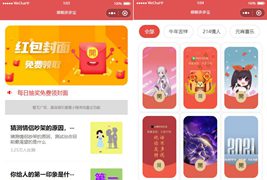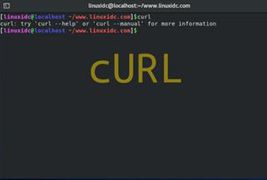聊聊angular中进行内容投影的方法
本篇文章带大家聊聊angular中的内容投影,介绍一下使用ng-content进行内容投影的方法,并了解有条件内容投影的实现方法,希望对大家有所帮助!

一、 ng-content 进行内容投影
1.1 ng-content
ng-content 元素是一个用来插入外部或者动态内容的占位符。父组件将外部内容传递给子组件,当 Angular 解析模板时,就会在子组件模板中 ng-content 出现的地方插入外部内容。
我们可以使用内容投影来创建可重用的组件。这些组件有相似的逻辑和布局,并且可以在许多地方使用。一般我们在封装一些公共组件的时候经常会用到。
1.2 为什么使用内容投影
定义一个 button 组件:
button-component.ts
@Component({
selector: '[appButton]',
template: `
<span class="icon-search"></span>
`
})
export class AppButtonComponent {}这个 button 组件的目的是在按钮内部加一个搜索的图标,我们实际使用如下:
<button appButton>click</button>
我们发现组件只会展示搜索图标, 按钮的文本不会展示,能你会想到最常使用的 @Input 装饰器,但是如果我们不只是想传文本进来,而是传一段 html 进来呢?此时就会用到 ng-content。
1.3 单插槽内容投影
内容投影的最基本形式是单插槽内容投影。
单插槽内容投影是指创建一个组件,我们可以在其中投影一个组件。
以 button 组件为例,创建一个单槽内容投影:
button-component.ts
@Component({
selector: '[appButton]',
template: `
<span class="icon-search"></span> <ng-content></ng-content>
`
})
export class AppButtonComponent {}实际使用如下:
<button appButton>click</button>
可以发现,现在这个 button 组件的效果是即显示了搜索图标,又显示了按钮的文本(click)。即把 <button appButton></button> 中间的内容 投影 到了组件的 <ng-content></ng-content> 位置。
ng-content 元素是一个占位符,它不会创建真正的 DOM 元素。ng-content 的那些自定义属性将被忽略。
1.4 多插槽内容投影
一个组件可以具有多个插槽,每个插槽可以指定一个 CSS 选择器,该选择器会决定将哪些内容放入该插槽。该模式称为多插槽内容投影。使用此模式,我们必须指定希望投影内容出现在的位置。可以通过使用 ng-content 的 select 属性来完成此任务。
组件模板含有
多个ng-content标签。为了区分投影的内容可以投影到对应
ng-content 标签,需要使用ng-content标签上的select属性作为识别。
select属性支持标签名、属性、CSS 类和:not 伪类的任意组合。不添加
select属性的ng-content标签将作为默认插槽。所有未匹配的投影内容都会投影在该ng-content的位置。
以 button 组件为例,创建一个多槽内容投影:
button-component.ts
@Component({
selector: '[appButton]',
template: `
<span class="icon-search"></span> <ng-content select="[shuxing]"></ng-content> <ng-content select="p"></ng-content> <ng-content select=".lei"></ng-content>
`
})
export class AppButtonComponent {}实际使用如下:
<button appButton> <p>click</p> <span shuxing>me</span> <span class="lei">here</span> </button>
1.5 ngProjectAs
在某些情况下,我们需要使用 ng-container 把一些内容包裹起来传递到组件中。大多数情况是因为我们需要使用结构型指令像 ngIf 或者 ngSwitch 等。。
在下面的例子中,我们将 header 包裹在了 ng-container 中。
@Component({
selector: 'app-card',
template: `
<div class="card">
<div class="header">
<ng-content select="header"></ng-content>
</div>
<div class="content">
<ng-content select="content"></ng-content>
</div>
<div class="footer">
<ng-content select="footer"></ng-content>
</div>
<ng-content></ng-content>
</div>
`
})
export class AppCardComponent {}使用:
<app-card> <ng-container> <header> <h1>Angular</h1> </header> </ng-container> <content>One framework. Mobile & desktop.</content> <footer><b>Super-powered by Google </b></footer> </app-card>
由于 ng-container 的存在,header 部分并没有被渲染到我们想要渲染的插槽中,而是渲染到了没有提供任何 selector 的 ng-content 中。
在这种情况下,我们可以使用 ngProjectAs 属性。
在上面的 ng-container 加上这个属性,就可以按照我们的期望来渲染了。
<app-card> <ng-container ngProjectAs='header'> <header> <h1>Angular</h1> </header> </ng-container> <content>One framework. Mobile & desktop.</content> <footer><b>Super-powered by Google </b></footer> </app-card>
二、 有条件的内容投影
如果你的元件需要有条件地渲染内容或多次渲染内容,则应配置该元件以接受一个 ng-template 元素,其中包含要有条件渲染的内容。
在这种情况下,不建议使用 ng-content 元素,因为只要元件的使用者提供了内容,即使该元件从未定义 ng-content 元素或该 ng-content 元素位于 ngIf 语句的内部,该内容也总会被初始化。
使用 ng-template 元素,你可以让元件根据你想要的任何条件显式渲染内容,并可以进行多次渲染。在显式渲染 ng-template 元素之前,Angular 不会初始化该元素的内容。
2.1 ng-container
既不是一个组件,也不是一个指令,仅仅是一个特殊的tag而已。 使用 ng-container 渲染所包含的模板内容,不包含自身。
angular代码片段
<div> <ng-container> <p>My name is wyl.</p> <p>What is you name?</p> </ng-container> </div>
浏览器调试窗口,可以发现 <ng-container> 标签消失了,并没有起任何作用
<div> <p>My name is wyl.</p> <p>What is you name?</p> </div>
使用场景,如下,在我们需要遍历或 if 判断 时,它可以承担一个载体的作用
<ul>
<ng-container *ngFor="let item of items">
<li>{{ item .name}}</li>
<li>{{ item .age}}</li>
<li>{{ item .sex}}</li>
</ng-container>
</ul>另外,ng 中常见错误之一的 for 和 if 不能写在同一标签上(在一个宿主元素上只能应用一个结构型指令),利用 ng-container 标签可以在实现功能的基础上减少层级的嵌套。
2.2 ng-template
先来看下面一段代码
<ng-template> <p> In template, no attributes. </p> </ng-template> <ng-container> <p> In ng-container, no attributes. </p> </ng-container>
浏览器输出结果是:
In ng-container, no attributes.
即 <ng-template> 中的内容不会显示。当在上面的模板中添加 ngIf 指令:
<ng-template [ngIf]="true"> <p> ngIf with a ng-template.</p> </ng-template> <ng-container *ngIf="true"> <p> ngIf with an ng-container.</p> </ng-container>
浏览器输出结果是:
ngIf with a ng-template. ngIf with an ng-container.
2.3 ng-template 和 <ng-container> 的配合使用
<ng-container *ngIf="showSearchBread; else tplSearchEmpty"> 暂时搜索不到您要的数据喔 </ng-container> <ng-template #tplSearchEmpty> 快快开始获取吧! </ng-template>
2.4 ngTemplateOutlet
插入 ng-template 创建的内嵌视图。 ngTemplateOutlet 是一个结构型指令,接收一个 TemplateRef 类型的值;
<div *ngTemplateOutlet="tpl1"></div>
<ng-template #tpl1>
<span>I am span in template {{title}}</span>
</ng-template>*ngTemplateOutlet = "templateRefExp; content: contentExp "
templateRefExp: ng-template 元素的 #ID
contextExp:
可空参数
content是一个对象,这个对象可以包含一个$implicit的key作为默认值, 使用时在模板中用let-key语句进行绑定
content的非默认字段需要使用let-templateKey=contentKey语句进行绑定
使用如下:
@Component({
selector: 'ng-template-outlet-example',
template: `
<ng-container *ngTemplateOutlet="greet"></ng-container>
<hr>
<ng-container *ngTemplateOutlet="eng; context: myContext"></ng-container>
<hr>
<ng-container *ngTemplateOutlet="svk; context: myContext"></ng-container>
<hr>
<ng-template #greet><span>Hello</span></ng-template>
<ng-template #eng let-name><span>Hello {{name}}!</span></ng-template>
<ng-template #svk let-person="localSk"><span>Ahoj {{person}}!</span></ng-template>
`
})
class NgTemplateOutletExample {
myContext = {$implicit: 'World', localSk: 'Svet'};
}2.5 利用 ngTemplateOutlet 进行内容投影
@Component({
selector: 'app-card',
template: `
<div class="card">
<div class="header">
<ng-container *ngTemplateOutlet="headerTemplate; context: { $implicit: title, index: otherDate }"></ng-container>
</div>
</div>
`
})
export class AppCardComponent {
@ContentChild('header', { static: true }) headerTemplate: TemplateRef<any>;
public title = 'Test';
public otherDate = {
auth: 'me',
name: 'appCard'
};
}使用
<app-card>
<ng-template #header let-label let-item="otherDate">
<h1>Angular</h1> {{label}} (Test) and {{otherDate | json}} ({auth: 'me', name: 'appCard'})
</ng-template>
</app-card>本文网址:https://www.zztuku.com/detail-11982.html
站长图库 - 聊聊angular中进行内容投影的方法
申明:如有侵犯,请 联系我们 删除。








您还没有登录,请 登录 后发表评论!
提示:请勿发布广告垃圾评论,否则封号处理!!